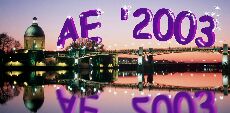
|
Toulouse | Vicinity | Region | More ? |

|
|
Click on a red square or on a yellow circle to get more information about the marked aera.
Map taken from the Quid web site where you can find more information about our regions (in french).
Click also on the photographs above to visit a touristic site or to magnify them.
|
Toulouse |

|
|
|
If you want to get some additional information about Toulouse, the "Pink City", you can consult the web pages of :
To get some practical information, consult the venue page of this site which summarizes the contents of the above addresses.
More in the south of the Haute-Garonne department, Saint-Bertrand-de-Comminges
on the Pilgrim's Route of Saint Jacques de Compostelle, exhibits a beautiful
"roman"-gothic
cathedral.
You can also see
this
site.
|
In the vicinity (less than 60 miles) |
Albi |
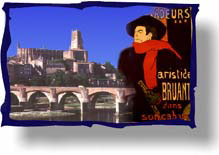
|
|
|
Albi is a city of about 50 000 inhabitants which offers a rich architecture: a gothic cathedral (Sainte-Cécile - 13th, 16th centuries), an historic center, some mansions, ... but also places of culture like the Toulouse-Lautrec museum (because Henri Toulouse-Lautrec was born here in 1864) which is located in the "Palais de la Berbie" (Palace built in the 13th century).
To know more about this town, see the web site of
the city
(from where the picture above has been taken) and the site of its
tourism office.
|
Cordes-sur-ciel |
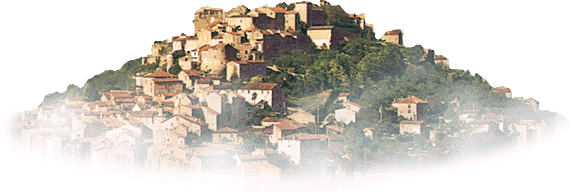
|
|
|
At about 15 miles north of Albi (22 km), Cordes-sur-Ciel occupies a remarkable site, perched high upon a rocky hill. This medieval village, founded in 1222, has been an active center of catharism. You can visit beautiful old homes whose appearance has been carefully preserved.
More information (heritage, activities, artists and craftsmen, ...) on
this web
site.
|
Carcassonne |

|
|
|
A well-known medieval and fortified town listed as part of the UNESCO's world heritage. You could also visit museums: a museum of the Cathar castles, of inquisition and torture, an international museum of cartoons, ... The official web site of the city with maps, guides to download (see Downloading). The picture above belongs to has been taken from that site. You can also visit this site to find more information or those private pages.
Visit the
walled town of Carcassonne.
|
Foix |
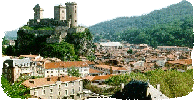
|
|
|
Foix is the prefecture of the Ariège department (french subdivision of a region). Its medieval castle overhangs the city from a rocky platform that dominates two rivers. This castle was possessed by the family of the counts of Foix, family linked to the Cathar heresy during the 13th century. The most famous count has been Gaston Phoebus (14th century).
You could find some piece of information on the city hall web site.
The web site of the tourism office does seem to be accessible
only by I.E... and is only in french.
|
Montauban |
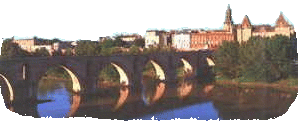
|
|
|
This city of 55 000 inhabitants is founded in the 12th century, as a fortified town, by a Count of Toulouse, Alphonse Jourdain. "Montauban" signifies "willow mount" or "white mount". In the next two centuries, great public works are done: Saint-Jacques cathedral, the Old bridge (it is 205 meters long and has seven archs, it has been built under the reign of Philippe le Bel) but the Hundred Years war brings plague. The city becomes a center of Protestantism in the 16th century and reaches its economical apogee with the economic revolution of the 19th century. Montauban is also the birthplace of Ingres and a museum is dedicated to this artist.
Visit the
city hall
web site (in french) from where the above photo has been taken.
|
In the Midi-Pyrénées region |
The Cathars castles |
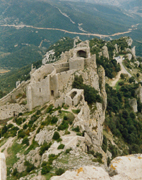
|
|
|
These castle are situated at the frontier of two french regions: Midi-Pyrénés and Languedoc-Roussillon. The land spread from Albi to Carcassonne and concerns also the Ariège. The most famous one is Montségur (the photo above provides from this site) where the last Cathars have perished in fire after a long siege. You can consult these sites dedicated to the Cathar culture (they are written in french but you will find photos):
If you don't read french, you can also see this english web site which is
dedicated to our region and, more especially, to
the Cathar castles. You could find several beautiful photos.
|
Auch and the Gascony |
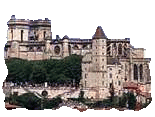
|
|
|
Auch is the capital of Gascony and an old Gallo-Roman city. You can visit the Sainte-Marie Cathedral (15th-17th centuries) which exhibits stained-glass windows by Arnaud de Moles. There is also a tower (Armagnac Tower) from 14th century, medieval lanes and a monumental stair (370 steps), ... Gascony is also known for its gastronomy (foie gras, confit, armagnac, ...). |
|
Not too far, Larressingle is a cute little medieval and fortified village with a little castle of the 8th century. It is often called the "little Carcassonne". Take a look at this site to get information about its history. |
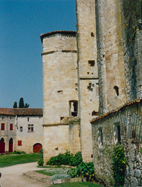
|
|
You can discover the Gascony through the official web site of the General Council of Gers: visit, learn about the life in Gascony, ... The photo above is taken from this site.
Or visit
this one more especially the
activities page.
|
Tarbes and the Pyrénées mountains |
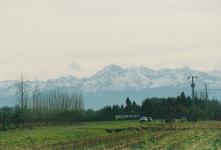
|
|
|
Tarbes, the prefecture of the department named Hautes-Pyrénées is, despite the fact that the mountains are near it, a town of plain. Its main touristic attraction is its garden (Massey garden) which comprises trees from all around the earth and the old cloister of Saint-Sever-de-Rustan (see a photograph at the bottom of this page). The city shelters national studs, horse is a tradition. The Greenwich Meridian passes close Tarbes.
You can consult the tourism office or the
official web pages to get more information on the city itself and also
about the main
places of interest
you could find in this department.
|
|
The Pyrénées mountains have several places of great
interest such as the cirque of
Gavarnie
also listed by UNESCO as a World treasure, a national park,
natural reserves (like Néouvielle's one), waterfalls, the
Roland's gap
(
brèche de Roland (a gap of 40 meters width and 100 meters high,
the legend says that Charlemagne's nephew, Roland de Roncevaux, has cut the mountain wth his sword Durendal in a battle against Saracens), ...
|

|
The "Pic du Midi de Bigorre" observatory |
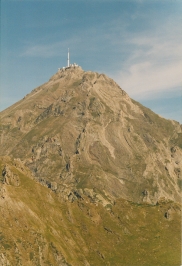
|
|
|
The observatory located on the "Pic du Midi de Bigorre" (2865 m since its surface has been leveled to build the observatory) is used by a research laboratory which depends on the University Paul Sabatier. Since 2000, it is possible to reach this peak using a cable car. Once the platform reached, the view is magnificent, if the weather is fine it is possible to see the area around Toulouse, the two points are distant from about 100 miles. It is also possible to visit a museum which is adjacent to the observatory; its official site is here with also a virtual visit and a photographs gallery.
Visit also this
site
to access more pictures.
|
Lourdes |

|
|
|
This city has became one of the greatest places of pilgrimage in the World after the Holy Virgin appeared to a young shepherdess Bernadette Soubirous in 1858. The cave domain is the real heart of the town with its two "stacked" basilica and its miraculous cave.
You can pay a visit to the official
web site of the city where you will find the above photograph of
the castle of the city.
|
Cahors and the Quercy |
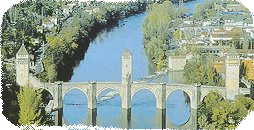
|
|
|
Cahors, prefecture of the Lot department, is also an old town with a rich history. It is a roman town which expanded in the 13th century with the arrival of bankers from Lombardie. Its most famous monument is the Valentré Bridge showed on the photograph above, taken from the tourism office site web site (in french but you can take a virtual visit). The official web site of the city is a way to visit the town and to know more about its local food or its wine.
You can also pay a visit to another medieval village near Cahors, in the Quercy
region:
Saint-Cirq Lapopie, more photographs are
here.
|
Figeac |
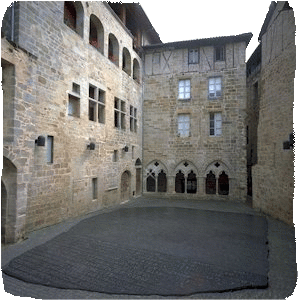
|
|
|
On the banks of the river Célé, Figeac is a little medieval town. It is also Jean-François Champollion's home town (the decipherer of hieroglyphs) and a museum is devoted to his works and to the Egyptian culture. The "Place des Ecritures" (photo above) is the symbol of the town and reproduces a giant Rosetta stone.
Get more information at the tourism office (from where the above photo provides).
|
Rodez and the Rouergue |
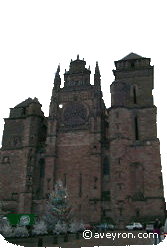
|
|
|
Ruthena was the original name for Rodez as it was colonized by the Romans. After the fall of Rome, the town was divided into two camps: the "Episcopal Cité" ruled by the bishops of Rodez and the Bourg ruled by the counts of Rouergue. These two camps were separated by a double wall, each camp having its own town center. As a result, the Gothic catedral of Notre-Dame (the above photograph from this site) was built in the "Place de la Cité" and the church of Saint-Amans was built in the "Place du Bourg".
In the same department of Aveyron,
you can also find other medieval towns or villages such as
Villefranche de Rouergue,
Najac,
Conques (and
its treasure),
Belcastel, ...
|
Want to know more about our region ?
|
|
|
These links will be useful, then...
|
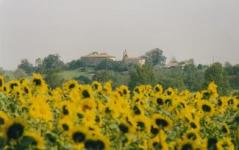
|
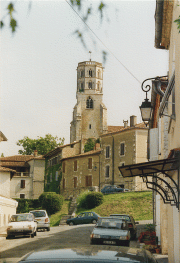
|
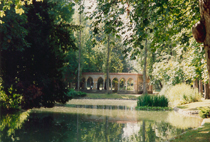
|
